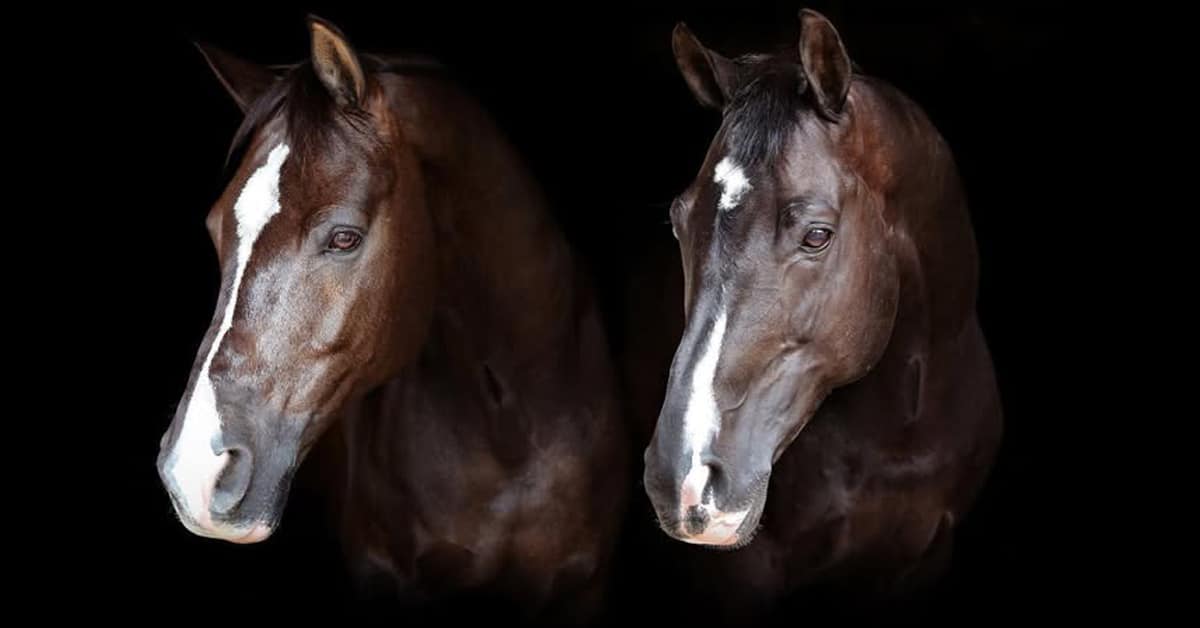A group of UK equine specialists have undertaken a unique study to develop an objective measure of equine trigeminal-mediated (TGM) headshaking (HS) in response to the current lack of an accurate method to monitor the frequency and severity of headshaking events.
Led by Dr. Kirstie Pickles, Dr. David Marlin, Professor Jane Williams, and Dr. Veronica Roberts, the innovative study successfully concluded that accelerometer data collected during trotting exercise on the lunge provides an objective measure of HS. Additionally, this data can differentiate between TGMHS, non-TGMHS, normal head movements, and those associated with forelimb lameness.

The accelerometer is mounted to the horse’s bridle at the poll. (supplied)
As such, an accelerometer mounted to a horse’s bridle at their poll may aid in the diagnosis of HS, quantification of its severity and frequency, and the monitoring of management and or treatment strategies for this painful and distressing condition. The research paper, titled ‘Use of a poll-mounted accelerometer for quantification and characterisation of equine trigeminal-mediated headshaking‘, has been published as open access in the Equine Veterinary Journal by BEVA.
Dr. Kirstie Pickles explains, “This is the first report of tri-axial accelerometer use for measurement of headshaking in horses. The accelerometer was able to provide accurate measurement data about the characteristics and frequency of headshaking movements. Additionally, data analysis provided excellent recognition of headshaking-associated movements of the head from normal head motion displayed by control [healthy] and lame horses, and between TGMHS and non-TGMHS affected horses. As such, the accelerometer holds potential as a diagnostic aid to the clinician, as well as being useful in objective assessment and monitoring of disease severity.”
Dr. David Marlin adds, “Headshaking is an extremely distressing condition for both horses and owners. Despite some excellent research in recent years, there is still a lot that we don’t understand. This is complicated by the fact that headshaking is often episodic – horses may shake badly for a day or two and then not shake for a few weeks. Also, it can be confused easily with other conditions which cause the horse to shake its head, such as dental pain or guttural pouch infections. This tool will be invaluable in supporting clinicians and researchers in trying to improve the welfare of TGMHS affected horses, and we already have two further studies utilising the same technology.”
Dr. Veronica Roberts comments, “We are extremely grateful to the Langford Trust for their financial support of this research.”
The Study: Methods & Results
TGMHS is a neuropathic facial pain syndrome that affects some horses. It is characterised by varying intensity and frequencies of violent head movements and signs of nasal irritation. Currently, there is no gold standard diagnostic test for TGMHS, meaning diagnosis is made by careful observation and the exclusion of other causes following a detailed physical examination, endoscopy, and CT scan.
To determine an accurate method to quantify and characterise the condition, the researchers recruited 56 horses. This sample included: 18 horses who presented with symptoms of TGMHS, 10 horses who were non-TGMHS, 12 horses presenting with forelimb lameness, and 16 healthy horses.
Head movement data was collected for five minutes whilst the horses trotted on the lunge using a tri-axial accelerometer attached to the bridle or halter headpiece at the horses’ poll. The study found that characteristics of head movements differed between groups of horses. TGMHS horses had both more frequent head movements and movements with greater g-force (acceleration).
TGMHS horses recorded over twice as many positive peaks per minute than other horses. The percentage of peaks above 2 g (upwards head movements) was over 12-times greater, and the percentage of peaks less than -2 g (downwards head movements) was over four-times greater in comparison to other horses.
These rapid acceleration/deceleration peaks are associated with the head movement described by owners as when the horse looks like it has received a sudden electric shock to the muzzle or been stung by a bee up its nose.
The use of an accelerometer, therefore, could be useful for both veterinary surgeons and owners of headshaking horses to provide useful additional data to help identify TGMHS and its severity plus the response to treatment, as well as aiding in further understanding of the condition at minimal cost. Furthermore, improving the ability to correctly assess treatment outcomes would also have a positive effect on horse welfare.
More News










